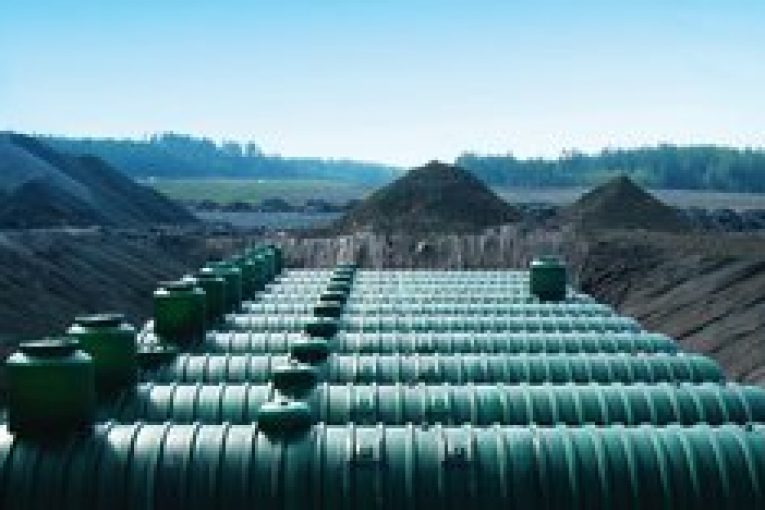
While the global oil market remains in a dire situation, it’s starting to look like the nightmare scenario envisioned for the past month might just be averted.
The industry feared a flood of unwanted crude would overwhelm the world’s storage tanks as fuel demand was shattered by the coronavirus. Once that “storage wall” was hit, producers would be forced into a chaotic wave of potentially damaging shut-ins at oil wells.
In recent days, however, the alarm is starting to subside.
After the brutal price crash, producers have cut output on a historic scale, including unprecedented reductions by the OPEC+ alliance. Now demand is starting to creep higher as governments ease lockdowns, letting drivers back on the roads.
Though a substantial surplus remains – prompting Saudi Arabia to announce additional output cuts on Monday – the threat of a storage blow-out has receded.
“The risk of tank-tops at the global level has dissipated, as the pace of the crude stock build has already peaked,” said Bassam Fattouh, director of the Oxford Institute for Energy Studies.
In some critical locations, such as India and South Korea, storage has already been strained to its limits. Space at the U.S. crude hub in Cushing, Okla., became so scare that crude prices briefly dropped below zero last month for the first time on record.
Elsewhere, oil tankers are being used as makeshift, floating warehouses to absorb the overflow on a scale never seen before. When the glut was at its zenith last month, everything from pipelines to rail cars were being pressed into service as a receptacle.
The rampant accumulation of oil inventories around the world is slowing down, and may be about to drop for the first time since January, data provider Kayrros SAS estimates. Stockpiles increased by 4 million barrels a day in the week to May 3, compared with a peak surge of 10 million a day in April. China, which drove the massive build-up, has already swung to a “steep draw.”
Price signals have “worked their magic and the market has managed to re-balance and avert the worst,” said Antoine Halff, chief analyst at Kayrros.
Space is starting to emerge for refined products in Europe and the Middle East, according to brokerage ODIN-RVB Tank Storage Solutions. Capacity is now available for hire in Denmark and Spain, and later this month, for gasoline and diesel at Fujairah in the United Arab Emirates.
International oil prices have rebounded by about 50 per cent in the past two weeks, and are trading near $30 a barrel in London, as demand and supply tighten. Perhaps more importantly, the difference in prices of oil for delivery in the months ahead is reducing, suggesting the frantic scramble for storage has slackened off.
The discount on front-month Brent versus the contract six months out has narrowed more than 60 per cent since late April to about $3.75 a barrel, according to data from the ICE Futures Europe exchange. As the spread – or “contango” – needs to cover the cost of storage, its contraction implies those costs are diminishing.
“The fears about an overflowing oil market and exhausted storage are beginning to calm,” said Norbert Ruecker, head of economics at Julius Baer Group Ltd. in Zurich.
It’s a view shared by many in what’s called the physical market, where actual cargoes of crude are bought and sold that are then refined into fuels like gasoline and diesel.
The focus has shifted from the fear of hitting tank tops to gradual increases in demand as some businesses restart and motorists are permitted a little more freedom, according to several traders, who asked not to be identified as commercial discussions are private.
Goldman Sachs Group, which warned in late April that global storage capacity would be maxed out within weeks, now says the worst of this cycle is effectively over. Moves by companies such as Chevron Corp. and ConocoPhillips to pare output shows the point of saturation has already arrived.
“They just couldn’t find somebody to take that oil, so you’ve essentially hit it,” said Jeff Currie, the bank’s head of commodities research. “Definitely we hit it on a local basis in different parts of the world.”
Much of the glut has been tackled by the Organization of Petroleum Exporting Countries and its allies, who agreed to curb production by just under 10 million barrels a day, or about 10 per cent of global supply from May 1.
The kingdom’s decision Monday to deepen cuts, while reflecting the scale of the oversupply that still needs to be dealt with, is another reason to believe that it can nonetheless be contained.
“We are not anymore in an environment where any bucket will be used to store crude oil,” said Olivier Jakob, managing director at consultants Petromatrix GmbH.
© 2020 Bloomberg L.P.
You can read more of the news on source
